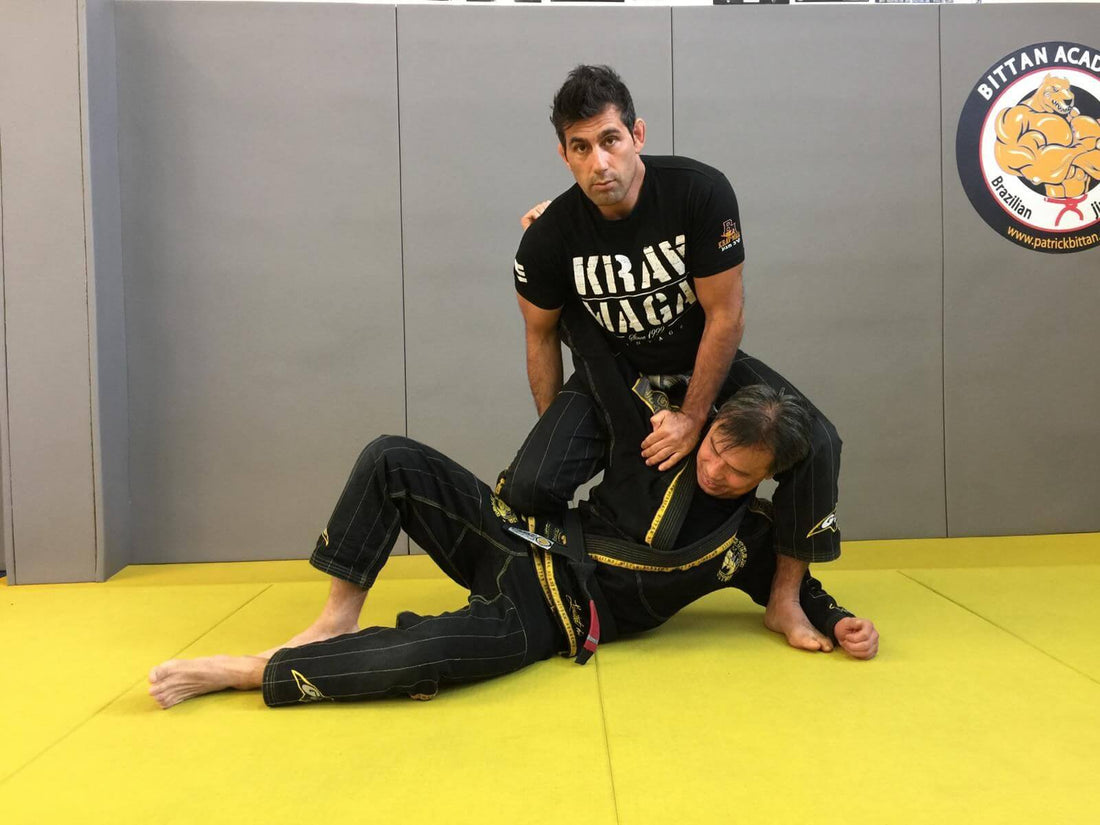
Unveiling the Roots of Brazilian Jiu-Jitsu: A Historical Journey through the Martial Arts
Share
Introduction:
Brazilian Jiu-Jitsu (BJJ) stands as a renowned martial art and self-defense system, celebrated for its effectiveness in close combat situations. However, its origins are deeply rooted in the annals of Japanese martial arts history. To understand the genesis of Brazilian Jiu-Jitsu, one must embark on a historical journey tracing back to the ancient martial traditions of Japan.
The Birth of Jiu-Jitsu in Japan:
The origins of Brazilian Jiu-Jitsu can be traced back to feudal Japan, where various forms of martial arts, collectively known as jiu-jitsu, were developed for combat and self-defense purposes. Jiu-jitsu techniques encompassed a wide array of grappling, joint locks, throws, and strikes, designed to subdue opponents regardless of their size or strength.
Among the myriad of jiu-jitsu schools that emerged in Japan, the most influential was the Kodokan, founded by Jigoro Kano in 1882. Kano sought to modernize traditional jiu-jitsu techniques by emphasizing the principles of leverage and technique over brute strength. He developed a systematized form of jiu-jitsu known as Judo, which became immensely popular and spread across the globe.
The Journey to Brazil:
In the early 20th century, Japanese immigrants began migrating to Brazil, bringing with them their cultural heritage, including martial arts traditions. One such immigrant, Mitsuyo Maeda, a skilled Judoka and student of Kano, arrived in Brazil in 1914.
Maeda's journey in Brazil led him to encounter Gastão Gracie, a businessman fascinated by the martial arts. Impressed by Maeda's skills, Gracie invited him to stay with his family and teach Judo. Maeda accepted the invitation and began imparting his knowledge to Carlos Gracie, Gastão's eldest son.
The Birth of Brazilian Jiu-Jitsu:
Under Maeda's tutelage, Carlos Gracie and his brothers, particularly Helio Gracie, learned the art of Judo and adapted it to suit their smaller statures. Recognizing the need to modify techniques to accommodate differences in size and strength, the Gracie brothers refined and expanded upon the principles of leverage and control.
Helio Gracie, in particular, played a pivotal role in the evolution of Brazilian Jiu-Jitsu. Despite his slender frame, Helio developed innovative techniques that emphasized leverage, positioning, and submission holds, enabling practitioners to overcome larger and stronger opponents.
The Rise to Prominence:
The Gracie family began promoting Brazilian Jiu-Jitsu through challenge matches and competitions, showcasing its effectiveness in real-life combat scenarios. These events, known as Vale Tudo, attracted widespread attention and established Brazilian Jiu-Jitsu as a formidable martial art.
In 1993, Brazilian Jiu-Jitsu gained international recognition with the inception of the Ultimate Fighting Championship (UFC). Royce Gracie, representing the Gracie family, showcased the effectiveness of Brazilian Jiu-Jitsu by dominating opponents from various martial arts backgrounds, solidifying its reputation as a highly practical and efficient fighting system.
Conclusion:
Brazilian Jiu-Jitsu, born out of the fusion of Japanese Judo and the innovative adaptations of the Gracie family, stands as a testament to the evolution of martial arts across cultures and generations. From its humble beginnings in the streets of Brazil to its global prominence in the realm of combat sports, Brazilian Jiu-Jitsu continues to captivate practitioners and enthusiasts alike, embodying the timeless principles of technique, leverage, and adaptability.
Brazilian Jiu-Jitsu (BJJ) stands as a renowned martial art and self-defense system, celebrated for its effectiveness in close combat situations. However, its origins are deeply rooted in the annals of Japanese martial arts history. To understand the genesis of Brazilian Jiu-Jitsu, one must embark on a historical journey tracing back to the ancient martial traditions of Japan.
The Birth of Jiu-Jitsu in Japan:
The origins of Brazilian Jiu-Jitsu can be traced back to feudal Japan, where various forms of martial arts, collectively known as jiu-jitsu, were developed for combat and self-defense purposes. Jiu-jitsu techniques encompassed a wide array of grappling, joint locks, throws, and strikes, designed to subdue opponents regardless of their size or strength.
Among the myriad of jiu-jitsu schools that emerged in Japan, the most influential was the Kodokan, founded by Jigoro Kano in 1882. Kano sought to modernize traditional jiu-jitsu techniques by emphasizing the principles of leverage and technique over brute strength. He developed a systematized form of jiu-jitsu known as Judo, which became immensely popular and spread across the globe.
The Journey to Brazil:
In the early 20th century, Japanese immigrants began migrating to Brazil, bringing with them their cultural heritage, including martial arts traditions. One such immigrant, Mitsuyo Maeda, a skilled Judoka and student of Kano, arrived in Brazil in 1914.
Maeda's journey in Brazil led him to encounter Gastão Gracie, a businessman fascinated by the martial arts. Impressed by Maeda's skills, Gracie invited him to stay with his family and teach Judo. Maeda accepted the invitation and began imparting his knowledge to Carlos Gracie, Gastão's eldest son.
The Birth of Brazilian Jiu-Jitsu:
Under Maeda's tutelage, Carlos Gracie and his brothers, particularly Helio Gracie, learned the art of Judo and adapted it to suit their smaller statures. Recognizing the need to modify techniques to accommodate differences in size and strength, the Gracie brothers refined and expanded upon the principles of leverage and control.
Helio Gracie, in particular, played a pivotal role in the evolution of Brazilian Jiu-Jitsu. Despite his slender frame, Helio developed innovative techniques that emphasized leverage, positioning, and submission holds, enabling practitioners to overcome larger and stronger opponents.
The Rise to Prominence:
The Gracie family began promoting Brazilian Jiu-Jitsu through challenge matches and competitions, showcasing its effectiveness in real-life combat scenarios. These events, known as Vale Tudo, attracted widespread attention and established Brazilian Jiu-Jitsu as a formidable martial art.
In 1993, Brazilian Jiu-Jitsu gained international recognition with the inception of the Ultimate Fighting Championship (UFC). Royce Gracie, representing the Gracie family, showcased the effectiveness of Brazilian Jiu-Jitsu by dominating opponents from various martial arts backgrounds, solidifying its reputation as a highly practical and efficient fighting system.
Conclusion:
Brazilian Jiu-Jitsu, born out of the fusion of Japanese Judo and the innovative adaptations of the Gracie family, stands as a testament to the evolution of martial arts across cultures and generations. From its humble beginnings in the streets of Brazil to its global prominence in the realm of combat sports, Brazilian Jiu-Jitsu continues to captivate practitioners and enthusiasts alike, embodying the timeless principles of technique, leverage, and adaptability.




